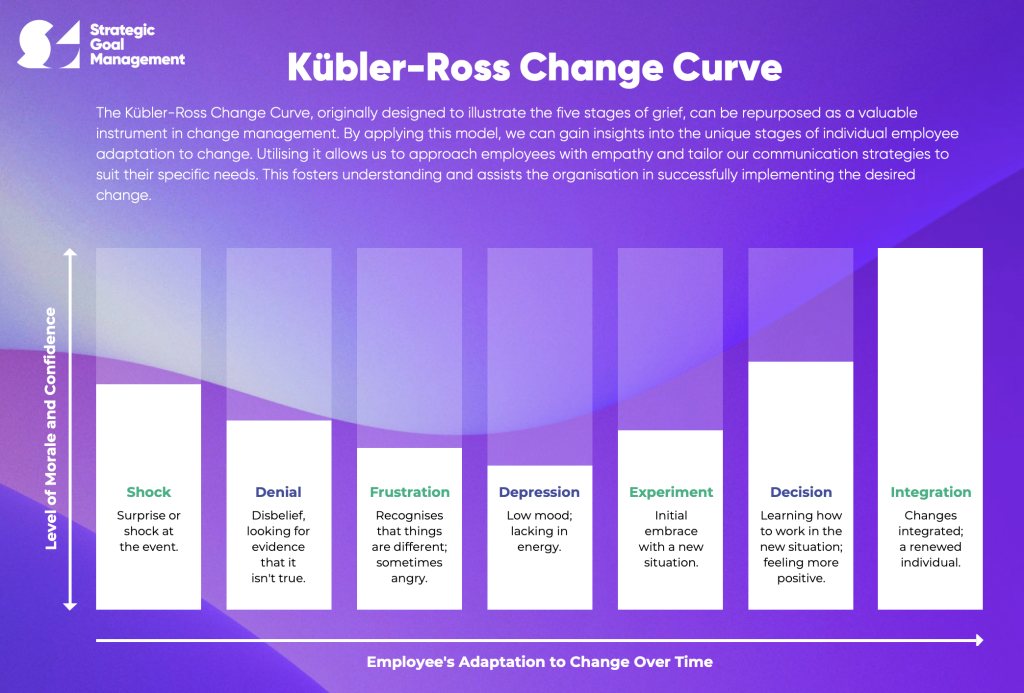Introduction In the second article in the �How Not To� series, you�ll learn about the common leadership mistakes that can cause your change initiative to fail. This irreverent take on�change management�is based on my personal observations and is told...
Introduction
In the second article in the �How Not To� series, you�ll learn about the common leadership mistakes that can cause your change initiative to fail. This irreverent take on�change management�is based on my personal observations and is told from the point of view of the bad boss we�ve all had. However, there are several links to helpful change management resources that you should take a look at.

Keep Employees in the Dark
When you are responsible for change management activities in your business, it�s vital that you refrain from speaking to staff to inform them why the change is necessary. Because staff members�hate change, it�s best to keep them in the dark until the last minute; this way, they won�t be able to moan and voice their inevitable objections. Let rumours and hearsay dominate the office grapevine. After all, the more confused and anxious your employees are, the harder it will make them work. Fear has ever been a great motivator.�
Set Unrealistic expectations
You should always make grandiose promises to ensure your change goals are unrealistic. Sure, you may not have a clue about the resources, time, or feasibility of your plans, but that�s all part of the chaos, right? Let your employees bask in disappointment and disillusionment when the changes inevitably fall short. As the change boss, remember you can always blame everyone else, which is your right as a leader.
Ignore Employee Resistance to Change and their Emotions

Source: https://www.ekrfoundation.org/5-stages-of-grief/change-curve
There�s a renowned change management model called Kubler-Ross�s�Change Curve�regarding the emotional reactions to change.�The often cited model�should be ignored because people�s reactions to change and feelings are unimportant.�
�How can people feel a sense of loss when moving to a new office or switching to a new CRM system? Get over it and crack on.�
When employees prove to be in the way of your change initiative, leaders should use the�autocratic leadership�style to the fullest extent. Offer helpful advice such as:�
�This is not a democracy, when I want your opinion, I�ll tell you it.��
What on Earth is a Change Agent?

The most ridiculous role in change management has got to be that of the�change agent. Much less cool than a secret agent, more annoying than a football agent and less trusted than an estate agent.
�Come on, everyone, let�s change; it will be fun, we can move from state A to state B as an organisation together�But you still have to complete all your normal work, and there�s no extra pay. Sign me up for that. No wonder employees hate change.�
The only prerequisite required to lead change effectively is a massive boss mug. Don�t be confused with a mug who is your boss. Why isn�t the person leading the change called the change boss?

�The best way to get staff to comply with a new change process is to tell them they�re all working late until it�s done. The pinnacle of motivation in its truest form; take their time away and watch them scurry to push the change through.�
Don�t Involve Key Stakeholders and Employees in the Change Process

Some change management professionals harp on about�stakeholder analysis, communication plans and�power interest matrixes. All of these are entirely unnecessary and introduce more work and increased bureaucracy. Tell stakeholders what they need to know only when they need to know it and refrain from using the word consultation. Don�t give them any funny ideas. If you do, they will think that they have a say.�
�If you need inspiration, have a brew in your massive boss mug, then go out there and tell them that�change is the only constant�in business.�
Don�t Track or Report Progress
When managing change, it�s crucial to avoid any semblance of accountability or transparency. By neglecting progress tracking, you ensure that no one knows where they stand or how close they are to achieving goals. Tracking and reporting progress only brings structure and order to the chaos you�ve diligently cultivated. Instead, revel in the unknown and leave your team in the dark.
This lack of visibility will breed frustration and a sense of disorientation, adding an extra layer of confusion to the already chaotic environment. After all, who needs clarity and direction when you can indulge in a perpetual state of uncertainty?
�Accountability becomes a thing of the past, as there are no metrics to measure success or failure. So, wave goodbye to clarity, embrace the unknown, and enjoy the cluster*uck.�
Ignore Employee Feedback

Who needs to hear from the people�directly affected�by the change? Absolutely no one! If they don�t rank higher than you, then you won�t even need to acknowledge their insignificant problems. Ignore their opinions, suggestions, and concerns; they would have been involved in the planning if they were important enough. Show them that their voices don�t matter and that their low-level expertise is irrelevant. This gambit will fuel frustration and resentment towards you, fostering an environment of sheer discontent. One in which you can look incredible by getting the change done despite the overwhelming�barriers to change.
Ignore Lessons Learned from the Previous Change Initiatives

I find it remarkable that some people think they must read through several reports on�lessons learned�from other organisational change projects. How are those other projects relevant? None of them had me at the helm with my strategic brilliance as the change boss. A heavy dose of common sense, some shouting and thinly veiled threats will do the job of motivating everyone.
Minimise Training and Support

Don�t waste time and resources on�proper training�or support systems when implementing changes. Coaching and mentoring are vastly overrated and should be ignored. Assume that your employees will naturally adapt and figure everything out independently. Throw them in the deep end; this lack of guidance will let you see who will sink and swim.
Resist Flexibility and Adaptability
Change is about shaking things up, but why adapt to new circumstances? Instead, cling stubbornly to the old ways and procedures. Resist any notion of flexibility or openness to new ideas. This will ensure that your team does things just how you like, the same way they have always done it.ďż˝
�Doing as we have always done keeps things simple and maintains the comfortable status quo.�
Always Rush Through the Change Process
When you rush through the change process, you can return to business-as-usual activities and play golf much sooner. Secondly, If the project is challenging, by handing it over quickly, staff can take the blame if anything goes wrong.ďż˝
Summary

You have just finished reading a masterclass on how not to manage change. By following these epic ways to fail at change management, you�ll be well on your way to creating a whirlwind of confusion, frustration, and chaos within your organisation.
Remember, effective change management is for those who actually want to achieve meaningful outcomes, engage employees, and drive success. But why bother when you can embrace the absurdity of terrible advice? Just remember to grab your massive boss mug and hold it tightly as you navigate the treacherous path of failed change initiatives.
It�s okay to laugh at the expense of bad advice, but when it comes to real-life change management, let�s strive for excellence, collaboration, and positive transformation. Cheers to embracing the right way to manage change and avoiding the comical pitfalls of failure!
Click the link for a useful basic change management guide.
The post How Not to Manage Change ďż˝ Epic Ways to Fail at Change Management appeared first on Strategic Goal Management.









